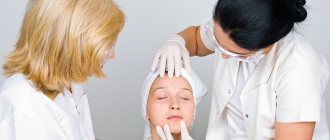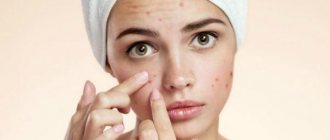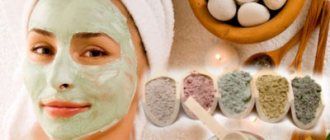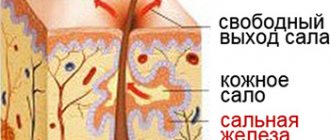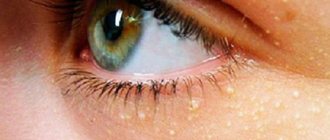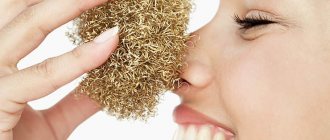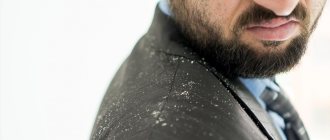The appearance of dry patches of skin on the face is not only a cosmetic inconvenience, but also a health concern. This article will tell you about the possible causes of this condition, methods of treatment and reduction of its manifestations.
Flaky, rough, reddened areas of the skin on the face deprive the skin of its healthy glow and lead to the formation of early wrinkles. While changes in skin texture can be a cause of cosmetic concern, dry, flaky skin can also make the skin more susceptible to other problems. Due to itching, you can scratch the skin and cause an infection.
One of the common questions among people is why these patches appear on the face despite moisturizing and taking care of the skin. Although you might want to take care of your skin religiously.
Factors such as dehydration, sun damage, chemicals, and side effects of certain treatments can reduce skin moisture and cause itching and flaking. If women experience hormonal changes during pregnancy, this can also affect the skin.
Normal healthy skin is filled with moisture along with natural lipids or fats that keep the facial skin firm and beautiful. When environmental factors or certain health problems lead to moisture loss.
The large amounts of chemicals found in soaps and facial cleansers can dehydrate the skin and rob it of its natural lubrication. Most facial cleansers contain a surfactant, the well-known sodium laureth sulfate, which is a foaming agent and also one of the main causes of dry skin. Fragranced moisturizers can also be extremely hard on the skin and should ideally be replaced by rich face creams, which help retain moisture in the skin. Foundations can also dry out your skin.
Quick remedies
Switch to a mild detergent.
Choose a non-comedogenic and hypoallergenic moisturizer.
Use regular milk to cleanse your skin. Dip a soft cloth into a cup of milk and use it to clean your skin. The lactic acid in milk will gently cleanse the skin while the fat moisturizes it.
You can also use olive oil or sweet almond oil to moisturize your skin.
Warm the oil slightly and gently massage a small amount into your face. It works well to soften dry facial skin.
Use natural masks for dry skin, for example with aloe juice. Open the aloe leaf and scrape off the jelly-like substance. Apply on your face and leave for a while. Rinse off with cool water.
Weather conditions can also harm your skin. Skin tends to become thinner during the winter months due to low temperatures outside and dry indoor air. But even in summer, staying in air-conditioned rooms for most of the day can aggravate the problem and lead to white, flaky patches on the face. Prolonged sun exposure can also damage the skin.
To prevent the indoor air from drying out, use a humidifier. Protect your face and other parts of your body with protective clothing - caps, hats, sleeves.
Always use sunscreen before going outside. The sun's ultraviolet rays break down the collagen and elastane fibers in the skin, leading to the formation of wrinkles and dry patches.
Redness and flaking of the skin may be due to medical problems.
Atopic dermatitis: This is a chronic, long-term skin disorder characterized by the development of a rash that can be extremely itchy and scaly.
Psoriasis: Psoriasis is a chronic, non-infectious, autoimmune disease that results in red, scaly patches on the skin.
Diabetes: Sudden fluctuations in blood glucose levels can lead to dehydration and dry skin.
Hyperthyroidism: A condition that is marked by decreased production of thyroid hormones and leads to dysfunction of sebum production. This in turn causes rough and dark patches on the skin.
Other medical conditions that can cause dry patches include allergies, ichthyosis, kidney disease, myeloma, and cancer. Certain medications, such as diuretics for high blood pressure and acne medications, can cause dry skin.
In all the described cases, you must consult a doctor.
Translation and photos from buzzle.com
Hyperkeratosis of the facial skin is a pathological symptom complex characterized by excessive cell division of the stratum corneum of the epidermis in combination with a disruption of the desquamation process, leading to thickening of the skin, its dryness, and uneven surface. Some areas of the affected facial skin become covered with a dry crust.
The thickening can vary from a few millimeters to as many as centimeters.
Causes of orange peel appearance on the face
There are many reasons why our skin becomes problematic, crusts and bumps appear. After all, this is an open area of the body, it is exposed to absolutely all external factors: weather, pollution, the ecological state of the environment, the harmful effects of cosmetics. If small imperfections appear and the skin becomes lumpy, then you need to look for the reasons in your lifestyle.
The following factors contribute to the appearance of unevenness and enlarged pores:
- Sudden climate change. Don’t be surprised if problems arise if you go on vacation or radically change your living conditions;
- Constant presence in places where air humidity is very high;
- Constant use of a cosmetic product that is chosen incorrectly;
- Constant use of foundation and powder - products that clog pores;
- Improper or irregular diet;
- Failure in the body associated with hormones;
- Effect on the skin of dust and strong wind;
- Constant exposure to open sun;
- Bad habits;
- Constant nervous tension and stress;
- Neglecting to remove makeup before bed;
- Strong production of sebum by the body.
There are often cases when the causes of orange peel on the face are hereditary or genetic factors. The fact is that in childhood and adolescence, pores expand and contract automatically, and with age these functions weaken and the face becomes like an orange peel.
Causes of seborrhea on the face
Seborrheic dermatitis belongs to a group of inflammatory skin diseases. Accompanied by a change in the quality of sebum (sebum) and an increase in the secretory function of the sebaceous glands.
Most of the sebaceous glands are concentrated on the face - more than 300 per 1 cm2.
Seborrheic dermatitis is one of the manifestations of seborrhea. The disease is fungal in nature and is provoked by the lipophilic fungi Malassezia. When the immune system is stable, they are in a spore state. Activation of the fungus occurs when local or general immunity decreases.
To find out why seborrhea occurs on the face, the dermatologist conducts a series of laboratory tests. The most likely triggers of excessive sebum secretion include:
- unbalanced diet;
- vitamin and mineral deficiency;
- schizophrenia;
- hyperhidrosis;
- foci of chronic infection;
- radiotherapy;
- infectious psychosis;
- HIV infection;
- antibiotic abuse;
- diabetes;
- hereditary predisposition;
- frequent stress;
- gastrointestinal diseases;
- lack of personal hygiene;
- hormonal imbalance.
Seborrhea is 3 times more common in men, which is associated with an increase in testosterone levels in the blood.
In 75% of cases, the disease affects adolescents. It is diagnosed much less frequently in women and men after 35-40 years of age.
Under unfavorable conditions, the immune system loses control over the proliferation of the fungus. Malassezia feed on sebum, so seborrhea is characterized by a change in its composition. As a result, sebum loses its bactericidal properties, which increases the risk of secondary infections.
How to prevent orange peel on your face
If you have not yet been exposed to harmful factors, but are afraid that the skin will become flabby over time and tubercles will appear, then you need to properly care for it.
To prevent the formation of uneven skin, you need to follow these recommendations:
- Constantly clean your pores with special cosmetics. To do this, use special lotions and gels for washing every morning and evening. Make sure that they contain medicinal herbs;
- Make masks. This is especially required for thick, lumpy skin that is difficult to treat;
- Don't forget to moisturize your skin. Often people with oily or combination skin think that they don't need moisturizer, and this is the biggest mistake. It is imperative to moisturize your skin; in addition, the combination type needs it the most.
- Cleanse your face of dead skin particles once every two weeks using a facial scrub. Dead skin can also clog and enlarge pores;
- Apply masks made from a decoction of medicinal herbs to your skin;
- Once every two weeks, use a mask that will tighten the skin, tone it and make it elastic.
Remember that it is better to prevent the formation of orange peel on the face.
Like any deficiency, this formation is much more amenable to prevention than treatment. But if the orange peel manages to affect your face, then treatment should be started immediately.
There are several methods to get rid of orange peel and thick skin. Various salons provide treatment with cosmetic procedures that help get rid of the deficiency. In addition, you can tighten your face at home, using folk remedies or using cosmetic masks.
Seborrheic dermatitis on the face symptoms
Now about what symptoms of seborrheic dermatitis are found in people with this pathology:
- peeling of the skin comes to the fore. It is accompanied by an obsessive itching that interferes with normal life. This itching with peeling is located on the scalp of the body, having clear boundaries. This border runs along the hairline. Moreover, the lesion is symmetrical in nature.
- if children have seborrheic dermatitis on the face, most often in the scalp area. In adults, this can also be the area of the beard, mustache, and nasolabial triangle. The areas behind the ears, eyebrows and even eyelashes are often affected. If you go lower from the head, you can observe characteristic peeling in almost all folds of the body. Navel, groin area, armpits and so on.
- the disease is gradual and progressive. At first there is no weeping or the elements do not merge together. Treatment of dry dermatitis on the face is relatively easy. Then, if nothing is done, small, pinkish-yellow bubbles merge and form plaques with clear boundaries. The plaques are covered with thick scales on top.
How to get rid of orange peel yourself
To ensure that your efforts to get rid of imperfections are not in vain, you need to resort not only to direct, but also to indirect effects on the skin.
For this:
- Improve your living conditions. Stop not getting enough sleep and not eating enough. Avoid stress and overwork. Monitor your body's health. Play sports whenever possible.
- Don’t be lazy, cleanse your skin of dirt and makeup before going to bed;
- Use gel for washing;
- Do not overdo it with applying cosmetics to your skin. Using face masks too often can also cause negative consequences.
For maximum results, it is not enough to simply follow these recommendations. Along with home remedies, consult a professional cosmetologist. The treatment will not take much time, but will have a great effect on the skin.
Getting rid of orange peel in a beauty salon
When you contact a cosmetologist, they will create a program for improving your skin, recommend good facial products, and give recommendations on physical activity and diet.
In addition, the salon will offer you the following procedures:
- Peeling;
- Darsonvalization;
- Microdermabrasion;
- Laser resurfacing.
All these techniques are aimed at cleansing and eliminating imperfections of thick skin. After their use, a short rehabilitation course follows. But you can’t go back to your old lifestyle in order to maintain the results for a long time.
To ensure that the result remains in its original form, pores do not begin to expand and tubercles appear, buy only high-quality facial cosmetics.
- Yves Rocher;
- Garnier;
- Green mama;
- Clean line;
- One hundred beauty recipes.
Orange peel on the face
causes a lot of inconvenience to a person. The cause of this unpleasant phenomenon is considered to be stretching of the pores on the face, which may be a consequence of:
- age-related skin hypertrophy;
- frequent overwork and stress;
- characteristics of the climatic zone (excessive humidity or, conversely, dry air, strong winds or frost);
- bad habits;
- hormonal disorders;
- poor nutrition and lack of a regular rhythm of life.
Also among the reasons for the appearance of sagging skin on the face are climate change and excess decorative cosmetics. Many of the reasons do not depend on lifestyle and are a genetic predisposition to the formation of large pores on the face.
Regardless of gender and age, people want to look attractive. But especially the problem of appearance and the appearance of orange peel on the face worries young people. And it is they who resort to radical methods of getting rid of enlarged pores: they dry out the face with lotions, and then use inappropriate formulations and creams, the effect of which is to tighten the facial skin. As a result, the effect is the opposite: a secondary infection joins the orange peel, and black dots begin to appear in the pores themselves.
You will read about what to do and what to avoid in the fight against orange peel on the face in the article dedicated to this common problem.
Signs of illness
Symptoms of hyperkeratosis of the facial skin are expressed in thickening of the affected areas of the skin, redness, and increased dryness of the skin. The skin peels off and becomes covered with a dry crust, which bursts with facial movements, forming scabs and wounds.
Lip hyperkeratosis is characterized by thickening of the epidermal layer of the lip edge. This thickening rises above the lip and presents a flat, smooth and painless surface with whitish-gray scales. The surrounding tissues become inflamed and red. The main danger is the possibility of facial hyperkeratosis degenerating into precancerous diseases.
After tanning became fashionable and the younger generation spent a long time in the open sun, the disease began to appear among young people.
Symptoms of hyperkeratosis of the facial skin do not have a positive effect on the psycho-emotional state of the patient. Women and girls are especially worried about the external manifestations of the disease.
Methods to combat orange peel on the face
Methods of dealing with orange peel on the face can be divided into home methods and those carried out in beauty salons. The main measures that should be taken in the fight against orange peel on the face should be aimed at:
- Cleaning pores. This should be done using light soap solutions and cleansing lotions that do not contain alcohol. You can also use scrubs and steam baths.
- Narrowing of flabby areas, which can be achieved by using ice creams from herbal decoctions.
- Toning skin with enlarged pores.
The best solution to getting rid of orange peel on the face is to use complex drugs that have all three of the above actions. Also, means of similar action will easily relieve other unhealthy manifestations: greasyness and unhealthy shine.
.
Beauty salon services
The services of beauty salons that help get rid of orange peel on the face include the following procedures:
- Peeling is the process of removing the upper stratum corneum of the skin using mechanical action.
- Darsonval therapy is exposure to high-frequency pulsed current.
- Microdermabrasion is mechanical skin resurfacing.
- Laser resurfacing is the process of exposing pores to a laser of a certain frequency and color.
All the procedures listed above give excellent results in the fight against orange peel, even in those people who have a tendency to form the latter for reasons beyond their control.
The cost of the procedures cannot be considered budgetary; moreover, their multiplicity is always at least ten, and the duration of one can exceed two hours. Also, salons often have appointments, and the times may be inconvenient for people. That is why these actions are not considered by many people for many reasons.
Home remedies
Home remedies for dealing with orange peel involve applying masks to tighten the skin pores. All the remedies are simple, and most importantly, they can be used at a convenient time, without leaving home. Although no less effort needs to be made and the duration of getting rid of the unpleasant phenomenon on the face will also not be quick.
Excellent remedies in the fight against “orange” skin will be:
- A decoction of linden flowers, which must be prepared from one tablespoon of the preparation, ground into powder, and one hundred milliliters of hot water. The aromatic tea should be boiled for an hour over low heat, and then steeped for another twenty minutes. The cooled broth is applied to the face with cotton swabs, and then left on the skin until completely dry. There is no need to wash off the product.
- Nourishing masks made from fresh fruits or seasonal berries. Whipped protein should be added to all cosmetic products.
- Potato mask made from one potato tuber, grated and mixed with the yolk of a chicken egg. Apply the product to the face and leave for half an hour, after which it is washed off.
- Tomato mask with a narrowing effect. To enhance the effect, add rye bread soaked in water and squeezed out and one tablespoon of vegetable oil to the grated tomatoes. The duration of the application is fifteen minutes. The product should be washed off with cold water.
- A mask made from one tablespoon of fresh lemon zest mixed with a teaspoon of natural olive oil. By using this remedy regularly for a month, you can achieve the desired results. It is only important to know that for those who want to maintain a tan on their face, this product is not suitable.
- A cleansing scrub made from steamed coffee grounds and dry oatmeal, taken in equal quantities.
- A mask made from one beaten chicken protein mixed with one tablespoon of finely grated carrots and three tablespoons of rye flour. The exposure time of the medicinal composition is no more than fifteen minutes, after which the pore narrowing product should be washed off with cool water without soap. After this operation, you should wipe your face with ice cubes and then lubricate with moisturizer or milk.
All of the above remedies must be used for a long time. You should also refrain from using decorative cosmetics at the time of treatment.
Vitamins and probiotics can also help in the fight against facial skin problems, which will improve intestinal function, because everyone knows that external beauty begins with order inside the body.
How to treat seborrhea on the face
Before starting therapy, consult a dermatologist. Based on the diagnostic results, the doctor determines suitable treatment methods that are aimed at:
- correction of background diseases;
- restoration of the functions of the sebaceous glands;
- increasing immunity;
- elimination of cosmetic defects.
Features of therapy depend on the form of seborrhea and the severity of its course.
Topical and systemic antifungal drugs
Oily and dry seborrhea of the skin is treated with antimycotics - antifungal agents. Ointments and creams are used for local facial treatment:
- Nizoral;
- Lamisil;
- Terbized;
- Ketodin;
- Dermazol;
- Ketozoral;
- Lamifene.
To destroy the lipophilic fungus Malassezia throughout the body, tablets are used:
- Fluconazole;
- Difluzol;
- Atifan;
- Lamifene;
- Terbinafine;
- Diflucan;
- Fungotek;
- Diaflu.
Systemic antimycotics increase the load on the liver. Therefore, they are prescribed only by a doctor for severe dermatitis.
Exfoliants
Timely exfoliation of dead skin cells prevents sebum from clogging the skin pores. Therefore, oily seborrhea on the face is treated with keratolytics - exfoliating agents:
- Salicylic ointment;
- Ureotop;
- Resorcinol;
- Excipial M;
- Carboderm;
- Kerasal;
- Resorcinol.
If the scales fit tightly to each other, wipe the face with Vaseline. After removing sebum and dead skin cells, apply an antifungal cream or ointment.
Corticosteroids to relieve inflammation
If seborrhea cannot be cured with antimycotics, hormonal drugs are used. They reduce swelling and red spots, accelerate the healing of damaged areas of the epidermis.
Corticosteroids should not be used for perioral dermatitis, acne and rosacea.
Medicines with corticosteroids:
- Dermovate;
- Beloderm;
- Kremgen;
- Powercourt;
- Klobeskin;
- Carizon.
Dermatologists do not recommend applying hormonal ointments under the bandage. Long-term use of corticosteroids is dangerous for facial skin atrophy.
Immune stimulation
Treatment of dry seborrhea involves taking immunostimulating agents. They increase the body's resistance to opportunistic fungi. Due to this, the severity of inflammation on the face is reduced.
The following immunostimulants have antimycotic and anti-inflammatory properties:
- Elidel;
- Pimecrolimus;
- Nibutane;
- Galium-Heel;
- Levamisole;
- Tenizol.
Medicines that affect the functioning of the immune system are taken on the recommendation of a doctor. Immunostimulating therapy is not prescribed for the treatment of seborrhea in children under 12 years of age.
Adjuvant therapy
Dermatitis on the face is a clear sign of ill health of the internal organs. If seborrhea was caused by gastrointestinal diseases, disorders of the immune or nervous system, auxiliary drugs are included in the therapy:
- antihistamines (Suprastin, Ebastine) – eliminate itching, swelling, burning and other manifestations of allergies;
- antibiotics (Erythromycin, Tetracycline) – destroy bacterial flora when ulcers form on the face;
- digestive enzymes (Festal, Pancreatin) – accelerate the digestion of food in the small intestine, stimulate the absorption of nutrients into the blood;
- probiotics (Enterozermina, Acylact) – restore intestinal microflora, strengthen general immunity;
- sorbents (Filtrum, Polyphepan) – bind and remove toxins from the body, reducing the severity of allergic reactions;
- non-steroidal anti-inflammatory drugs (Ketorolac, Naproxen) - eliminate pain, relieve inflammation;
- vitamin and mineral complexes (Complivit, Zincteral) - treat hypovitaminosis, affect metabolism and the functioning of the sebaceous glands.
Seborrhea is often complicated by acne, which can lead to the formation of scars on the face. To prevent them, medications with a smoothing effect are used - Contractubex, Aekol, Dermatix.
UV irradiation
Ultrasound treatment of seborrhea on the face eliminates inflammation. Irradiation of problem areas promotes:
- normalization of sebum secretion;
- healing of inflammatory foci;
- reducing itching.
UV therapy reduces the activity of pathogenic fungi and stimulates local immunity. As a result, the condition of the facial skin improves, the life cycle of epidermal cells is restored and the likelihood of acne is reduced.
Skin care
Proper care is an important component of comprehensive treatment. To remove oily and dry seborrheic dermatitis, you should:
- wash your face 2-3 times a day;
- use antibacterial or tar soap;
- wipe your face with a cleansing tonic or lotion;
- temporarily abandon decorative cosmetics.
For severe peeling of the skin, it is recommended to use scrubbing creams and gels. To speed up the healing of facial damage, professional masks with hyaluronate are used. They stimulate the regeneration of the epidermis and restore the hydrolipid mantle of the skin.
Nutrition rules
In terms of effectiveness, proper nutrition can be compared to drug vitamin therapy. To normalize the functioning of the sebaceous glands and cure seborrheic dermatitis of the face, the diet includes:
- broccoli;
- seaweed;
- almond;
- prunes;
- radish;
- fish fat;
- black currant;
- strawberries;
- spinach;
- pine nuts;
- rice bran;
- sprouted wheat;
- chicken fillet;
- pumpkin seeds;
- pistachios.
The basis of nutrition for facial seborrhea consists of foods rich in B vitamins, ascorbic acid, zinc, and tocopherol.
During therapy, avoid alcohol, fast food, marinades, confectionery and pastries. These products stimulate the growth of fungus in the skin.
Folk recipes
Facial seborrhea is effectively treated with folk remedies with antifungal properties:
- For oily seborrhea. To 20 g of wine alcohol add 5 g of tar and castor oil. The mixture is applied to the face for 25 minutes. Wash off with cool water.
- For dry seborrhea. Mix 2 tsp. castor oil and alcohol. Add 1 tsp. chopped parsley seeds. The product treats problem areas on the face. Remains of cosmetics are washed off after 20-25 minutes.
- With mixed seborrhea. Calendula tincture is mixed with castor oil in a ratio of 10:1. Apply the product to the peeling areas with a cotton pad for 30 minutes.
Burning and redness of the face indicates hypersensitivity to the components of the products. This means you need to stop using them.
Prevention measures
Measures to prevent the occurrence of orange peel, the appearance of which is not associated with genetic problems, are simple. They consist of proper care for skin prone to the formation of enlarged pores. The most popular of all warning methods are listed below.
- Healthy lifestyle. If possible, try to avoid stressful situations and overwork. Playing any kind of sport, good company and active pastime, plus proper nutrition will help prevent pore enlargement under other negative conditions.
- Do not use cosmetics that are not age appropriate. Avoid decorative cosmetics from unverified manufacturers. Apply makeup correctly and avoid excess, and in the evening be sure to remove it using gentle products.
- Use stone, coffee or grain scrubs intended for facial and décolleté skin care. Use the product strictly in accordance with the instructions, but be sure to perform the procedure at least once every ten days.
- To wash your face, use soft products based on essential oils and extracts of medicinal herbs. You can also use gels or decoctions of herbs and medicinal plants. The best options would be infusions prepared with hawthorn berries, lemon zest, marigolds, horsetail and chamomile.
Prevention of enlarged pores on the face is also the use of masks to improve blood circulation and. as a result, elasticity and firmness of the skin. The frequency of such procedures is at least once every five days.
We hope that the article was useful to all those who are looking for ways to solve the problem of orange peel on the face, and the proposed simple and affordable skin care products will help instill confidence in themselves and get rid of complexes.
Every woman wants to look good at any age. If there are various rashes on the face, this can become a big problem, despite the fact that there are many different cosmetics that can restore the skin to a decent appearance. One of the biggest problems is the stretching of the pores on the face, causing the skin to resemble the peel of an orange. Why is this happening? Everyone has pores; sebum comes out through them. But when the sebaceous glands work too actively, sebum gradually stretches the pores, and the face becomes like an orange peel. If at an early age the skin is elastic and can resist stretching of pores, then with age it loses this ability to a large extent. And if this happens, the skin on your face is like an orange peel - what should you do?
Classification
Hyperkeratosis is divided into several types:
- Follicular. The development mechanism consists of excessive keratinization of the epidermis and impaired detachment of the upper keratinized layers. This leads to blockage of the follicle duct. The disease manifests itself as small red pimples in areas of hair growth (near the hair follicle) or on the face. Hyperkeratotic nodules often become infected, leading to pyoderma.
- Lenticular. It is based on gene mutations. Typical for middle-aged men. Has a chronic course.
- Disseminated hyperkeratosis. It is expressed in the formation of polymorphic elements resembling thick but short hairs. They have no tendency to merge. Localized on any part of the body. Sometimes they look like brushes.
Causes of orange peel appearance
This problem not only spoils the appearance in itself, but also leads to the appearance of rashes, irritations and bumps on the skin. There are many reasons for this kind of trouble.
Important! The skin of the face is an open area of the body that is exposed to all external factors, from the ecological state of the environment to the cosmetics you use.
The expansion of pores and the appearance of bumps and various rashes on the face can be caused by:
- Abrupt climate change.
- Increased humidity in places where you live or often visit.
- Incorrectly selected cosmetics or skin care products.
- Foundation and powder clog pores, so this problem can arise with constant use of these products.
- Poor nutrition.
- Hormonal disorders.
- Factors related to weather conditions - rain, wind, direct sunlight.
- Bad habits - alcohol and smoking.
- Frequent stress, sleep disturbances and overwork.
- Strong production of sebum by the sebaceous gland, for example, during adolescence.
- Hereditary or genetic factors.
Factors provoking the disease
Hyperkeratosis of the facial skin is not an independent disease. It accompanies diseases such as ichthyosis, erythroderma, and lichen, which have manifestations on the face.
Within reasonable limits, hyperkeratosis is characteristic of some areas of the skin - these are the feet, heels, and elbows.
The skin of the face is the most sensitive to various factors, so the likelihood of hyperkeratosis on the face is quite high. Coarsening of the skin occurs due to external influences, leading to increased cell division. The desquamation process is also disrupted: dead cells are not removed, although new ones have already formed in their place. This ends up thickening the skin layer.
Thickening of the skin on the face may be a consequence of shingles.
Other causes of hyperkeratosis of the facial skin:
- Hereditary predisposition. It has been proven that the disease can be inherited.
- Genetic failures lead to the appearance of lenticular hyperkeratosis.
- Endogenous disorders. Concomitant diseases that lead to disruption of metabolic processes in the body cause the appearance of facial hyperkeratosis. More often it is diabetes mellitus, in which metabolism disrupts many physiological processes and functions, including nutrition, dulling of pain and tactile sensitivity of the skin. It hardens and becomes dry.
- Vitamin deficiency. The consequence of diseases of internal organs may be impaired absorption of various essential vitamins, especially vitamin A.
- Disruption of keratin production in the body.
- Skin diseases or diseases that have pronounced manifestations on the skin. For example, ichthyosis, psoriasis.
- Psychosomatic (psychological) causes of hyperkeratosis of the facial skin.
- Occupational intoxication.
- External influences, for example, prolonged exposure to strong winds or under the scorching sun.
What can be done for prevention?
If you don’t have such problems yet and you don’t want to think about what to do in the future if your skin is like an orange peel, then you need to think about preventative measures. Facial skin needs proper care.
To prevent the formation of uneven skin, follow these recommendations:
- Constantly use special cosmetics that contain medicinal herbs.
- Make masks regularly, especially if you have lumpy skin. Alternate moisturizing, nourishing, tightening face masks.
- You definitely need to moisturize your skin.
- Use a scrub at least once every two weeks to rid your skin of dead skin particles.
Remember that any problem is easier to prevent than to treat. But if, nevertheless, the orange peel managed to reach you, then treatment should be started immediately. Many salons provide cosmetic procedures to help get rid of this deficiency. You can also tighten pores at home using traditional medicine.
Causes of the disease
Seborrhea on the face, which has only negative reviews, can be caused by the following reasons:
- Impaired immune system as a result of a lack of vitamins and hemoglobin in the blood.
- Disorder of the hormonal system during puberty.
- Violation of the functioning of the gastrointestinal tract, as a result of which the body absorbs nutrients and vitamins in insufficient quantities, toxins are also removed from the body in insufficient quantities. All this contributes to the development of dermatitis.
- Diseases of the liver and endocrine system.
- Mental disorders due to prolonged stress and depression.
- Obesity, in which internal organs begin to function more slowly, amino acid breakdown products accumulate in the body.
- Insufficient facial skin care, use of inappropriate cosmetics.
- Harmful working conditions, such as high humidity or dust.
- Genetic and hereditary predisposition.
Seborrhea of the facial skin, the treatment of which is not always necessary, usually occurs between the ages of 12 and 24 years, when the body experiences an increase in testosterone production and a decrease in estrogen levels. This disease has physiological prerequisites, so the signs of seborrhea should go away on their own. In some cases, the pathology does not go away, then the person needs to contact a dermatologist for an examination.
Seborrhea can also be caused by:
- genetic predisposition;
- Parkinson's syndrome;
- epilepsy;
- schizophrenia.
Provoking factors are:
- eating salty foods;
- disruption of hormones;
- lack of hygiene;
- chemotherapy treatment;
- lactation period.
Many scientists claim that seborrhea on the face develops as a result of the influence of one of the types of Pityrosporum fungi, which lives in the fat glands and hair follicles. This fungus is present in 90% of healthy people worldwide, but remains in a dormant state.
Beauty salon services
If you decide to use the services of beauty salons, then experienced cosmetologists will create a program for you to improve your skin, help you choose cosmetics that suit your skin type, adjust your diet and offer the following procedures:
- peeling;
- darsonvalization;
- microdermabrasion;
- laser resurfacing.
All these procedures are aimed at cleansing and eliminating imperfections in thick, porous skin.
Important! In order to maintain the result, you cannot return to your old lifestyle or old cosmetics, otherwise the pores will begin to expand again, and all your problems will return to you again.
Traditional methods of dealing with orange peel
If you have facial skin like an orange peel and you don’t know what to do, then turn to traditional medicine recipes for help. Many cosmetologists believe that folk remedies are much more effective than salon procedures.
The following recipes will help overcome facial imperfections:
- Linden flowers cope well with this problem. To do this, pour one tablespoon of dried flowers into 100 ml of hot water. Place the mixture on low heat and cook until it thickens. After the mixture has cooled, apply it to your face and leave for 20 minutes.
Important! It is better to remove such a mask with a dry cotton swab, and then wash with cool water.
- An excellent remedy for enlarged pores is masks made from fresh fruits and berries. Masks made from orange and strawberry are especially good.
Important! For a better effect, you can add beaten egg white to the orange mask.
- Vegetables will also benefit: Grate one potato tuber, mix with an egg and apply to your face for half an hour, then rinse. Tomato pulp also helps tighten pores. You can cut tomatoes or cucumbers into rings and leave them on your face for a while.
- Soak black bread in hot water and apply this warm paste to the skin for 15 minutes, and then rinse with cool water.
- Lemon zest mixed with olive oil also tightens the skin. But this mask is not suitable for everyone.
Important! If you are prone to allergies, then you should use a different recipe.
- A scrub made from coffee grounds or oatmeal will be of great benefit.
- Beat the egg white and mix it with the grated carrots. Add flour and stir until smooth. Apply to face for 15 minutes, then rinse with water. Finally, wipe your face with ice cubes and apply moisturizer to your skin.
Important! To remove all irregularities, pimples and bumps, you need to regularly do cosmetic procedures, use the advice and recipes of traditional medicine and lead a healthy lifestyle. You need to take care of your skin regularly, otherwise the effect will be short-lived.
Any external beauty is the result of a healthy body, so you need to lead a healthy lifestyle, then most skin problems will not affect you:
- Lead as healthy a lifestyle as possible, avoid stress and overwork. Exercise and eat right.
- Choose the right care products, don’t get carried away with cosmetics. Don't forget to remove makeup from your face at night.
- Do the scrub twice every 10 days. You don’t have to buy expensive products; you can use the same coffee grounds or oatmeal.
- It is best to wash your face with a special gel. It should contain oils and extracts of medicinal herbs.
- Lotions with hawthorn, lemon, calendula, and rosemary are well suited for such skin. You can make a decoction of herbs yourself and rinse your face with it. A decoction of horsetail and chamomile is very good at removing excess oil from the face and tightening pores.
- Use masks twice a week to improve skin elasticity and firmness.
How to exfoliate your facial skin effectively and inexpensively?
It happens that it is not possible to use pharmacy or expensive cosmetics. Traditional medicine will come to the rescue. can be made from simple ingredients. The most popular mask recipes can be read in the next article.
Dry, irritated skin needs special care. First of all, you need to learn how to properly cleanse your face. Severe irritation is often a consequence of washing with hard tap water. Those with sensitive skin especially often face this problem. Honey water is perfect for gentle facial care. The product can be easily prepared. You can take tap water into a liter container and leave for at least an hour. This is necessary so that harmful impurities sink to the bottom of the dish. It’s even better if you have a water purification filter at home. Before washing, add a tablespoon of honey to the water. First, the face is treated with a honey mixture, and then with plain warm water.
Peeling of the skin on the face is a natural process. And if there are no health problems, the keratinized particles will not be noticeable. But don’t forget about deep cleaning, which will speed up the regeneration process. A homemade facial scrub will come to the rescue. Peeling based on sea salt and fresh cucumber has an excellent exfoliating and at the same time rejuvenating effect. The vegetable is first grated on a coarse grater and the juice is squeezed out. Add a tablespoon of salt to the product and mix everything thoroughly. If the dermis is oily, you can treat your face twice a week. It is advisable to use this scrub for dry skin no more than once a month.
A homemade scrub will help get rid of dead skin particles quickly and inexpensively
Exfoliation of keratinized particles can also be done using soda. The frequency of procedures also depends on the type and condition of the skin. You should first wash your face using a suitable cleanser. Next, soda is applied to the damp face with massaging movements. For deeper penetration, the product can be left on the face for several minutes. A slight tingling sensation should not be alarming. The recipe should only be used for exfoliation. If there is redness and irritation, baking soda will only make the situation worse.
Video material
Skin like an orange peel is not a death sentence if you know what to do in such a situation. And you are now fully armed to begin an effective fight for the smoothness and beauty of your face.
Most often, women experience complexes about their face, because it is considered a calling card. And these complexes concern not so much the shape of the eyes or the thickness of the eyebrows, but rashes on the skin.
One of the most significant problems for many women is facial skin like an orange peel. Why does this problem appear and what can be done at home to get rid of it?
Is it possible to peel off the scab from a wound?
Wound surfaces take a long time to heal. Damage on the face takes three to five days, in the arms and chest lasts for a week, on the legs up to ten days.
The protective crust, which takes too long to fall off, prevents air from entering the injured area, the wound takes a long time to heal, and after healing, scars remain on the skin that have to be removed using cryodestruction, unless there is a contraindication.
You cannot remove scabs from injured surfaces; you must carefully remove them after softening. If the scab is pulled away from the wound, bleeding may begin again. The injured area will begin to heal more slowly and a scar will remain.
Why does orange peel form on the face?
It will not be possible to understand immediately why tubercles, irregularities, or crusts appear on the skin.
A person’s face is always open, and the skin is constantly exposed to various external factors: weather, harmful effects of cosmetics, pollution, etc. If it has become lumpy, then the reason should be sought in your lifestyle and factors such as:
- sudden climate change. Sometimes this problem manifests itself in people who have changed their place of residence, city, or gone on a business trip or vacation;
- constant use of inappropriate cosmetics;
- eating unhealthy foods or eating irregularly;
- frequent and prolonged stay in places with high air humidity;
- hormonal disbalance;
- constant use of foundations that clog pores;
- frequent exposure to the open sun, as well as exposure to strong wind and dust on the skin of the face;
- presence of bad habits;
- constant stress, worries;
- reluctance to remove makeup before bed;
- increased work of the sebaceous glands and, as a result, the production of large amounts of sebum;
- hereditary factor.
Many of these factors contribute to pollution and clogging of pores on the face, and therefore inflammation, rashes and orange peel appear on the skin.
Why is there a problem?
Most often, those who naturally have dry skin have to deal with this problem. The sebaceous glands do not work at full capacity. You have to additionally moisturize the epidermis using a fairly thick cream or lotion. Cosmetics should also be selected with special attention. You can often encounter a situation where areas of normal or oily dermis also peel off. Unpleasant spots appear on the face. These are areas where the skin becomes dry and tight. After some time, you can observe scales, which cannot be masked even with the help of expensive means.
What to do if until recently healthy skin begins to peel off? Initially, you should analyze your lifestyle. What changed? The reasons for changes in facial condition can be very diverse. They can be divided into two main groups. These are external and internal reasons. External factors include:
- Adverse environmental influences. The dermis often becomes dry in windy or rainy weather. Redness, irritation, and unsightly spots may appear on the face. Due to the rapid loss of moisture, epidermal cells quickly age. If you do not get rid of the problem in a timely manner, the irreversible process of premature skin aging will begin.
- Poor quality cosmetics. If skin irritation appears immediately after purchasing a new cream, you should stop using the product. Manufacturers often add components to cosmetics to extend shelf life. Although creams and lotions with parabens last longer, they have a negative effect on the condition of the face. If it has become crusty due to the use of good cosmetics, you may have to deal with an allergic reaction. Therefore, before using any product, it is worth testing it on the inside of your wrist. Allergies very often manifest themselves as peeling.
Poor nutrition is often the cause of health problems that manifest as flaking skin.
Internal causes of skin peeling include:
- Lack of vitamins. Poor nutrition often leads to health problems. The epidermis in this case acts as a kind of indicator. If a flaky spot appears on your face, you should consult a doctor. Based on the results of the study, it will be possible to find out which organ should be treated.
- Hormonal disbalance. Problems often begin to appear during adolescence. The reasons for peeling are the less intense work of the sebaceous glands. Red spots begin to appear on the teenager’s skin, which subsequently peel off.
How to get rid of orange peel?
Of course, if your budget allows, you should go to a beauty salon and use such effective procedures as laser facial resurfacing.
However, some cosmetologists believe that home remedies are not only not inferior in quality, but are often more effective than salon procedures. At the same time, everyone can afford such funds - you don’t have to spend serious money.
How to remove orange peel from facial skin? We offer several effective recipes:
- Pour a tablespoon of linden flowers into 100 milliliters of hot water. Don't use boiling water - just hot water! Place the mixture on the stove and wait until it thickens. When this happens, allow the mass to cool, and then safely apply it to the skin. After 20 minutes, remove the mask with a cotton pad, then carefully wash with cool running water. It is important not to rub your face while washing.
- Buy bread made from black flour and soak a small amount of it in plain water. Apply the mixture for 15 minutes, after which you can rinse with cool water.
- Crush the pulp of one orange with a spoon and apply this mixture to your face. Lie with it for about 15 minutes, rinse with water, and then use a moisturizer.
- Take a not very large grater and grate one raw potato. Add one egg to the mixture, mix everything and apply to the skin of the face. After 30 minutes, the mask can be washed off.
- A paste of fresh tomatoes will also help tighten your pores if you apply it for about half an hour.
- Another version of the above mask with tomatoes. It stays on the face for the same amount of time, but only the tomatoes are cut into rings.
- If you have oatmeal at home, you can use it to cleanse your pores of impurities. Simply soften the flakes in water and apply to problem areas for 20 minutes. And also.
- You can use coffee grounds as a scrub. It must be applied to the skin, gently rubbed over the face, then rinsed off.
- To tighten the pores, lemon zest, grated and mixed with olive oil, is also suitable. However, this recipe is not suitable for everyone. If irritation occurs after applying the mask, it is better to discard it and use another product.
Prevention
There is currently no orange peel on your face, but are you afraid of its appearance in the future? Then you need to take skin care measures:
This problem is much better preventable, but it is more difficult to treat. If orange peel does appear on your facial skin, you should start treatment immediately.
Treatment by a specialist will not take too much time, but the skin will become noticeably better and more beautiful.
If we talk about home care methods, it will be possible to get rid of bumps, bumps and pimples forever only if care procedures are carried out regularly.
Don’t be alarmed, cellulite has not yet “climbed” that high. But, unfortunately, even without its help, facial skin can look similar to a holey citrus peel. The reason for this is enlarged pores.
Every person has pores; sebum comes out through them, which performs a protective function. But when the sebaceous glands work too actively and the skin does not receive proper care, sebum, mixing with dead skin cells, gradually stretches the pores. Squeezing out blackheads (comedones) and poor-quality mechanical cleaning in salons aggravate the problem. If at an early age the skin can still independently resist the stretching of pores, then with age it loses this ability and becomes uneven. As a result, the face resembles the peel of an orange.
Most often, increased sebum secretion is a problem of adolescence, caused by hormonal changes in the body, and therefore, as a rule, there is no need to influence it from the inside. But the cause of excessive oily skin after 20 years can be problems in the body, for example, metabolic disorders. In this case, it makes sense to consult with a gastroenterologist and endocrinologist.
Scab
Crust on the wound
Crust on the wound begins to form immediately after injury. It may consist of a yellowish tissue fluid, so many people often confuse it with the discharge of pus. The scab protects the wound and allows the epidermis to recover quickly and safely. Most often, such crusts cover burns, abrasions, and superficial wounds.
In order for the lymphatic fluid to dry out and form a scab, constant air access to the wound is necessary. Such elements appear only if a bandage is not applied to the damaged skin. Doctors say that the crust is a natural dressing that provides wound protection better than any bandages. The skin under the scab begins to gradually recover; harmful pathogenic bacteria do not penetrate into it. However, scabs are good only if they do not occupy a large area of the skin.
Preventing stretching of pores
Cleansing.
Excessive sebum secretion in the T-zone (on the chin, wings of the nose and forehead) is indicated by combination skin. And all over the face - oily.
Therefore, cleansing products must meet the needs of these skin types. The best option is a gel for daily washing. It may contain extracts and essential oils of aloe, chamomile, basil, cloves, orange, iris, grapefruit. After the gel, you need a high-quality lotion or tonic without alcohol, containing astringents such as birch, hawthorn, calendula, lemon, rosemary extract, which will “tighten” the cleansed pores.
The most common mistake in caring for oily and combination skin is lack of hydration. And it is necessary not only for the general condition of the skin, but also to prevent stretching of pores. After all, sufficiently moisturized skin is elastic and in good shape, therefore, less susceptible to deformation. You need to choose creams with a light texture.
Special program.
Use a facial scrub twice every 7-10 days. It will remove dead skin cells, thereby preventing clogged pores.
Every other day, morning and evening, rinse clean skin with a decoction of chamomile and horsetail (1:1). This will help her cope with excess fat production.
It is useful to make masks 1-2 times a week to regulate the functioning of the sebaceous glands, as well as increase the elasticity and firmness of the skin. For example, this one.
Mix grated carrots with well-beaten egg whites, grind the mixture thoroughly, adding flour to it until a homogeneous paste forms. Apply to face for 15 minutes. Then rinse off first with warm water, then with cool water. After this, wipe your face with ice and apply moisturizer to damp skin.
Treating pores
Cleansing.
With already enlarged pores, deeper cleansing is required. For this, there are special gels containing glycolic (1-3%) and azelaic acids. Don't forget to tone your skin with a toner for your skin type. And also give your skin contrasting washes - a few seconds with warm and then cold water. Such small stresses are simply necessary for the skin; they activate metabolic processes. Such effects open the pores, forcing the skin to breathe, making it more receptive to moisturizing creams.
To make enlarged pores less noticeable, you should call for help from special cosmetics (creams and serums intended for skin with enlarged pores). They have a triple effect, control the functioning of the sebaceous glands, tighten pores and make the skin matte. I would like to note: the opportunity to get rid of enlarged pores once and for all with the help of such cosmetics is nothing more than a delusion. It is impossible to return already stretched pores to their previous size. The effect of such cosmetics is similar to the effect of tights. When the tightening effect of cosmetics ends, the pores expand again. Therefore, to visually reduce pores, you will have to use special products constantly. By the way, now some tonal products have this effect.
Special program.
Be careful when choosing a peeling product. Opt for gentle scrubs with fine particles or soft and non-irritating gommage masks. Otherwise, large particles entering the pore can injure its walls and cause inflammation.
A blue clay mask will be an excellent “help” in caring for skin with enlarged pores. It absorbs the contents of pores, disinfects, and reduces sebum secretion. In addition, it removes the surface layer of dead cells and thereby helps the skin renew itself faster. Dilute powdered clay with green tea to the consistency of sour cream. Apply an opaque layer to your face. After 20 minutes, rinse with water at room temperature. Carry out the procedure 1-2 times a week.
Modern cosmetological techniques can effectively cope with the problem of increased sebum secretion and enlarged pores. You should begin developing a course of procedures only after consultation with a cosmetologist. He will conduct diagnostics, determine your skin type, and identify the causes of enlarged pores.
Salon treatments
If the problem has gone far, then you cannot do without the help of a cosmetologist. With the help of cosmetic procedures, you can moisturize the skin, get rid of dead cells, and rough itchy crust on the face. The type and extent of the lesion are the main factors that will influence the doctor's prescription. To eliminate the problem, the following medications may be prescribed:
- Pharmacy masks with aquaphor. To avoid addiction, procedures with them should be done no longer than two weeks.
- Hydrocortisone cream (5 percent). They should treat flaky patches for two weeks as well.
- Dexpanthenol. A drug that effectively treats peeling contains vitamin B. It can be prescribed in the form of intramuscular injections, tablets, cream, aerosol, emulsion or ointment.
Should I do any additional procedures? Only a cosmetologist can say this. It depends on the degree of damage to the skin. Additionally, the doctor can select a course of treatment from:
- an intensive moisturizing complex consisting of a series of cosmetics with active ingredients;
- biorevitalization - an injection technique aimed at eliminating peeling (hyaluronic acid and biologically active substances are introduced under the skin);
- peeling (dry facial cleansing is necessary to remove the top layer of dead cells and rejuvenate the epidermis);
- mesotherapy, which is based on subcutaneous injections of hyaluronic acid.
If peeling covers a small area of the face, appears rarely, and does not bother you much, home remedies and proper daily care will help you cope with the problem.

